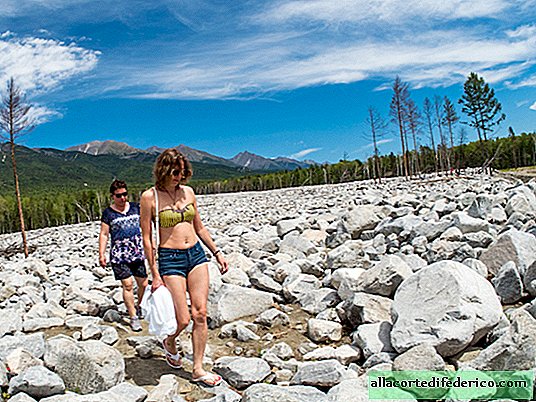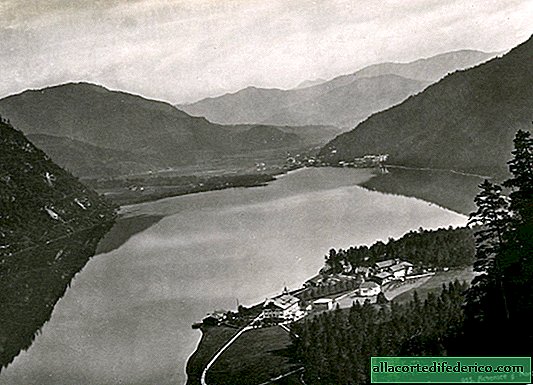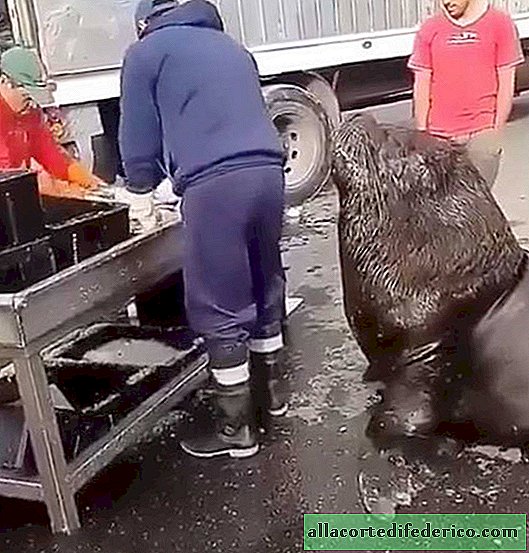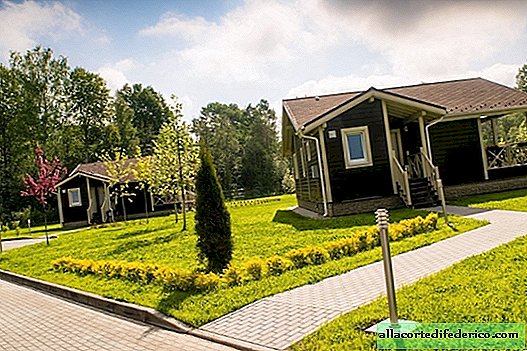Stone river: tragedy in Arshan
That night four mudflows descended from the mountains to the village at once. The first stone stream stopped two hundred meters from the park-resort of Arshan. If he still moved two hundred meters, he would have touched the hulls, and water with sand, small stones and fragments of trees would have poured into the territory of the park and the streets of the village.

The stream was very powerful, deep ditches formed on the streets. Sand brought gardens and cellars of houses. As a result of the emergency, all roads were blurred, bridges were destroyed, 19 houses could not be restored, and a total of 202 buildings were damaged, 8 people were injured of varying severity.
Two more streams left neighboring pads, then joined in the foothills and went to the Sagaan Dali boarding house.

The fourth came down east of the village of Arshan, along the Artemyev’s valley, and stopped in the forest. He can be seen on the way to Arshan.
Then, in 2014, several natural factors came together, which ultimately led to serious damage. It is already known that on June 27 a local atmospheric front formed over the village of Arshan and the adjacent Tunkinsky Goltsy. It spread over a relatively small territory, these are mountain slopes along the left bank of the Kyngargi River, as well as its left tributary.
The clouds erupted in a powerful many-hour rainfall that swept the compact territory. This led to an overflow of tributaries, and then of Kyngargi itself. The sharply rising water flooded the buildings in Arshan, located on the shore, and also damaged hiking trails to the famous river cascade of waterfalls. But this was not the worst result of heavy rain. So, a similar flood comprehended the surroundings of the Tunkinsky valley in 1971. Then there were also serious damage. But, fortunately, there were no casualties.
This time, a huge mass of water, accumulated in the bottoms of the glacial cars of the Tunkinsky Goltsy, set in motion moraine deposits, whose age is estimated at about 10-12 thousand years. The deposits have been preserved here since the ice age and formed at a time when the glaciers in the Tunkinsky Goltsy melted and the permafrost, retreating from the Baikal region as a whole, left frozen soils at altitudes of 2 thousand meters and above.

Hazardous deposits were mothballed for the time being. However, heavy rainfall on the night of June 28 became the main reason and the main driving force behind the formation of mudflow, which hit the eastern part of Arshan. It was a one-time single ejection of rock accumulated over centuries.
All the accumulated rock in the punishment under the pressure of water rushed down the slope. During a general inspection of the mudflow sites, two vehicles were counted, of which a single mud flow was formed, which then went to a gentle slope to Arshan. Along the way, an uncontrolled mud-stone flow passed through the forest, incorporating the demolished centuries-old pine trees. And all this mass of mud, silt, water, stones and tree trunks came to the outskirts of the village, bringing a lot of trouble to the inhabitants.
According to rough estimates, as a result of the mudflow from the cars, up to a million cubic meters of material was released. This is mud, silt, stones and a large amount of water. The boulders of those that were able to find and measure reached three meters across. The stream moved at a speed of 5 to 10 meters per second. By the time of entering the village, the width of the stream reached 500–600 meters, and the capacity was 4–4.5 meters.
On the plain, the stone stream gradually lost speed, squeezing water and dirt out from under it. The lack of a water "engine" led to a slowdown, and then a stop of the deadly mudflow. As a result, an extensive so-called "mudflow blanket" was formed, covering a significant territory. The mud stream, going further down the slope, brought adjacent forest masses with silt and spread out with a layer of 10-50 centimeters of silt and mud in the private courtyards of the village.

Three years have passed since the catastrophe, the village closes its wounds, the Kyngargi channel has been cleared, order has been restored, and the Stone River has become one of the tourist places to visit.

We stand on a multi-meter embankment, and the wounds from flying stones on the trees rise even higher.

Tourists sign stones, build both, the benefit of a lot of material.

Lada, Sonya, Kriska were here.

Pension "Sagaan-Dali".

Next to it, one can imagine the scale and power of a stone river.

Water, mud and stones blocked the building to the level of the second floor, people were evacuated.

Apparently, the village in this place has already weakened, stopped, otherwise the brick box would not have stood.


The resort territory is cleaned, but has not been restored.

You can still see large boulders and only be surprised at what happened without big casualties.

In another part of the village of Arshan, only the channel of the Kyngargi River reminds of the terrible. Interestingly, do these girls know what happened, or is it a big deal for them?

The mountains are strong and dangerous; man is nothing to them. And at the same time very fragile. Absolutely, you can’t say what caused the disaster, it became one of its causes. There are several more versions, for example, overflow of a mountain lake, conspiracy theological or even the Ministry of Culture of the republic: yes, they did a concert, they said, the spirits didn’t like it.


















